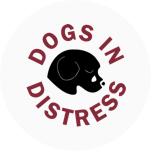Lead training puppies
Puppies will find lead training stressful at first. Start by putting the lead on your puppy and allow him to wander around an enclosed area, e.g. a garden, with the lead trailing behind him. In this way the pup does not associate the lead with limiting his desire to investigate. Do this for a few days and then move on to holding the lead and following the pup around the garden.
After a week to ten days you might start walking in public with the puppy. Try to limit the time you spend in very busy or noisy areas at first – but don’t avoid them completely. Take your dog out in the day time for very short walks at first. Don’t drag him along, be patient. Walk along slowly ensuring that your pup walks closely to one side of you.
Lead training dogs
Many rescue dogs may need to be lead trained, as they may have little or no experience of being walked on a lead. It is possible to lead train an adult dog without special equipment. Aim to have your dog walking closely to one side of you. If your dog pulls on the lead, often the simplest and most effective way to stop this is with the use of a special harness. Dogs in Distress recommend the Lupi harness for this purpose. This harness stops your dog pulling on the lead and ensures that you can both enjoy a walk together.





